Foxhound Bee Company runs a bee keeping supply company built for helping hobbyist beekeepers with their honey bees. Before Foxhound ever sold a single bee hive, we wrote educational blogs and taught beginner classes at our local beekeeping club.
Fast forward to today, and we have a retail beekeeping store in Birmingham, Alabama, and run bee colonies all over the area. We have honey bee colonies in urban, suburban, and rural areas of town and have gained a lot of experience keeping honey bees alive.
This beekeeping blog will help new beekeepers succeed with their bees by offering quality advice from our experienced beekeeping team.
Beekeeping 101
Foxhound Beekeeping 101 is your go-to guide for mastering the basics of beekeeping. Whether you're a curious beginner or just starting your first hive, this category covers essential topics like choosing equipment, understanding bee behavior, seasonal hive care, and safety tips. Learn how to support your bees, protect your colony, and grow your skills—one article at a time.

Master Guide – Is Beekeeping Right For Me?
Is beekeeping right for me?: Part 2 of 5 in our ultimate guide to getting started in beekeeping. Find out if you are the...
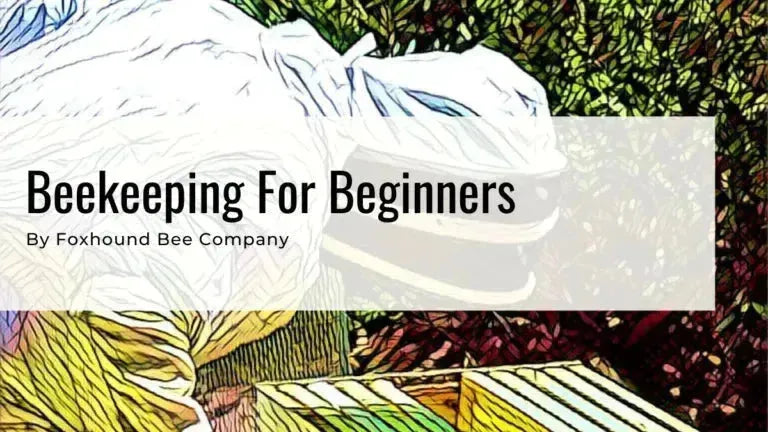
Master Guide – Beekeeping For Beginners
Curious about beekeeping but not sure where to start? Our Master Guide: Beekeeping for Beginners walks you through everything you need to know —...
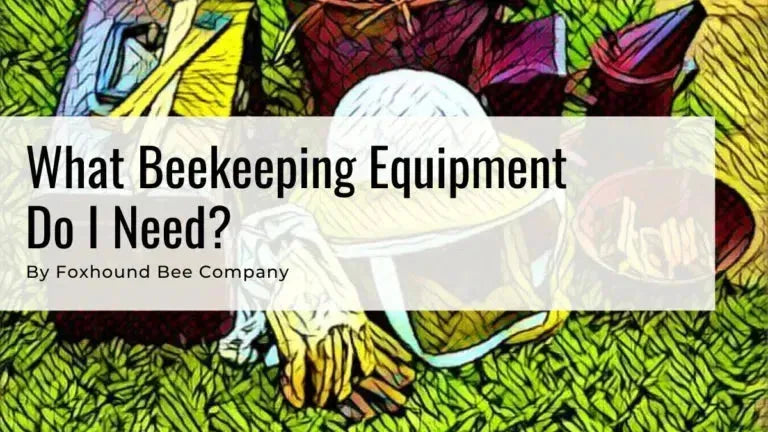
Master Guide – What Beekeeping Equipment Do I Need?
Figuring out beekeeping equipment is the most intimidating part of getting started in beekeeping. There are a lot of options, designs, and equipment configurations...
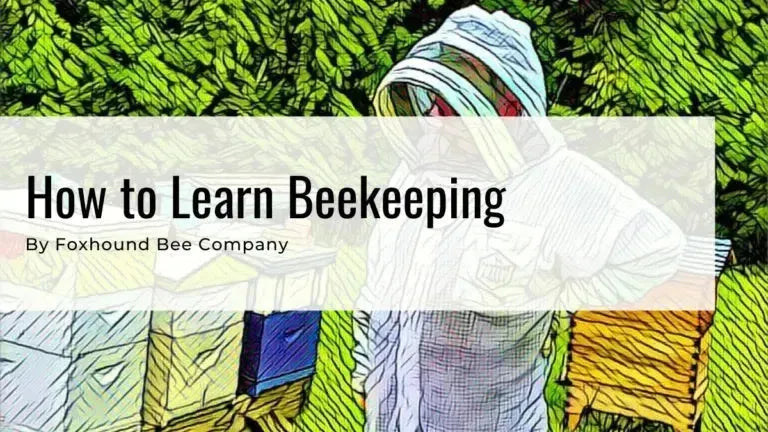
Master Guide – How To Learn Beekeeping?
Learning to become a beekeeper is a rewarding and challenging experience. There are a lot of ways to learn how to keep bees, and...

Master Guide – Where Do I Get Bees?
Where Do I Get Bees? Part 4 of 5 in our ultimate beekeeping guide. Learn how to find honeybees through packages, nucs, swarms, cutouts,...
Beekeeping Equipment
Explore the essential gear every beekeeper needs—from hive tools and smokers to suits, gloves, and feeders. The Beekeeping Equipment category dives into product comparisons, usage tips, maintenance advice, and recommendations to help you build a safe, efficient, and effective beekeeping setup. Whether you're upgrading or just getting started, we break down the gear that makes all the difference.

Uncapping Knives: Electric, Steam-Heated, Cold, and Serrated Kitchen Knives
When it comes to extracting honey , all our uncapping knives make all the difference. Uncapping knives are designed to remove the very top...

Foundation Cell Size And Cell Counts, Why It Matters
Many beekeepers use foundation to help the bees, but not all foundation is made the same. Cell sizes differ greatly among brands, as does...

Ultimate Guide to Bee Pollen Collection: Tips and Techniques for Beekeepers
Learn the essentials of bee pollen collection, from selecting the right traps to proper processing, ensuring healthy colonies and high-quality pollen harvests.
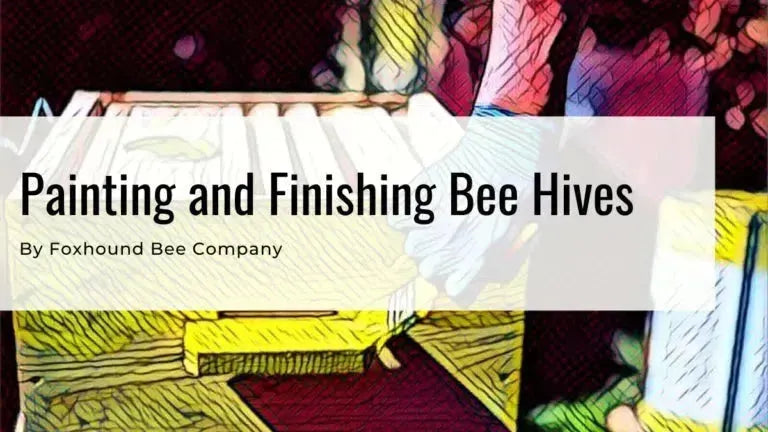
How To Paint And Finish Bee Hives
Painting and finishing your beehives isn’t just about looks — it’s about protecting your hive and giving your bees a safe, long-lasting home. In...

How To Assemble Foundationless Frames
Thinking of going foundationless? Building your own frames without foundation gives your bees the freedom to create natural comb, while saving you time and...

5 Things Every Beekeeper Needs To Start Beekeeping
Every beekeeper uses these 5 tools, so they should be at the top of your list when shopping for bee gear. If you have...

How To Light A Smoker
A well-lit smoker is a beekeeper’s best friend. It keeps your bees calm, makes hive inspections easier, and helps you work with confidence. In...

The Fastest Way To Build Bee Frames
Building bee frames doesn’t have to be slow or complicated. In this guide, we’ll share the quickest techniques and tools to assemble strong, reliable...

Oxalic Acid Vaporization
Learn the effective use of oxalic acid vaporization to combat Varroa mites. Discover tools, methods, and tips with plenty of options, all explained in...

What is a Honey Super?
A "honey super" is an extra box added to a beehive for honey storage. Learn about different box sizes, uses, and essential tips for...
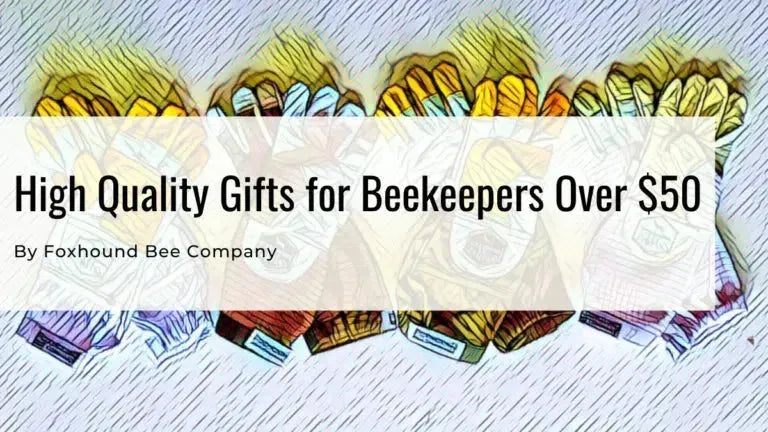
High-Quality Gifts For Beekeepers Over $50
Looking for a great gift for a beekeeper who just really loves taking care of bees? We present these gift ideas that your beekeeping...

How To Store Beekeeping Equipment For Winter
Storing beekeeping equipment is something that all beekeepers will need to do eventually. But it's important to do it correctly to protect your equipment...
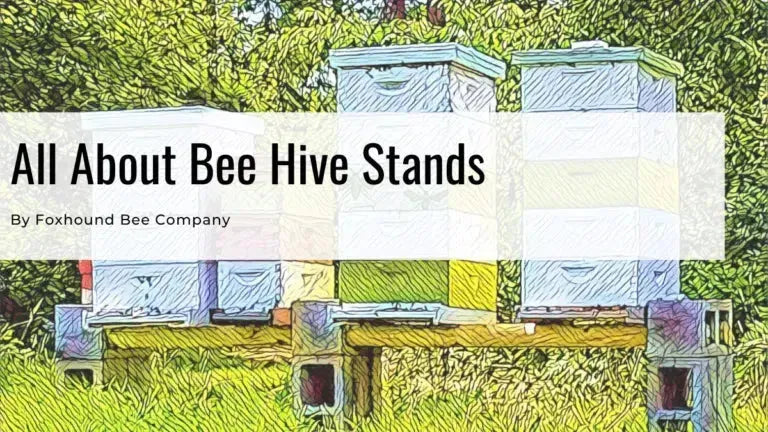
Bee Hive Stands
Setting up a bee hive stand is an important step in getting started with beekeeping and there are multiple types of hive stands available.

Varroa Mites And The Varroa Easy Check
Varroa Mites are insects that live in a honey bee colony and make it hard on bees to thrive. Well tell you what they...
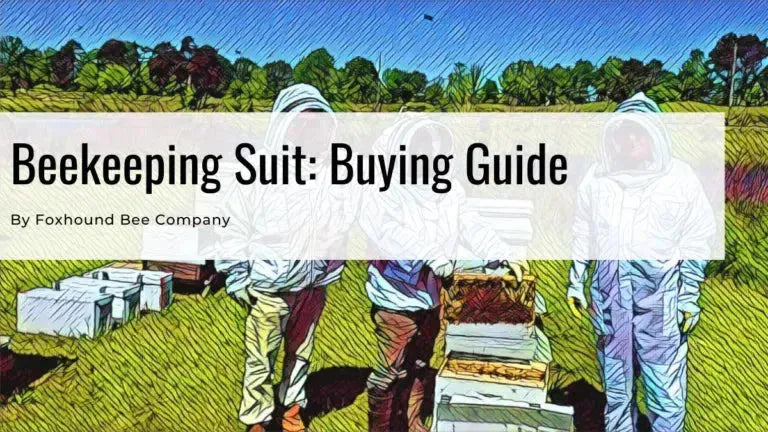
Beekeeping Suit: Buying Guide
Guide to finding the best beekeeping suit: choose safe, quality gear that fits well, protects from stings, and keeps you cool while working in...
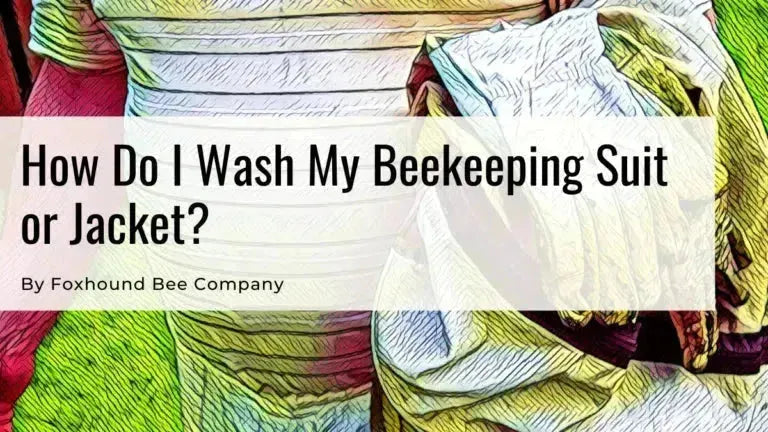
How Do I Wash My Beekeeping Suit Or Jacket?
Your bee suit goes through a lot during the season, from propolis and wax to a few bee stings along the way. This article...
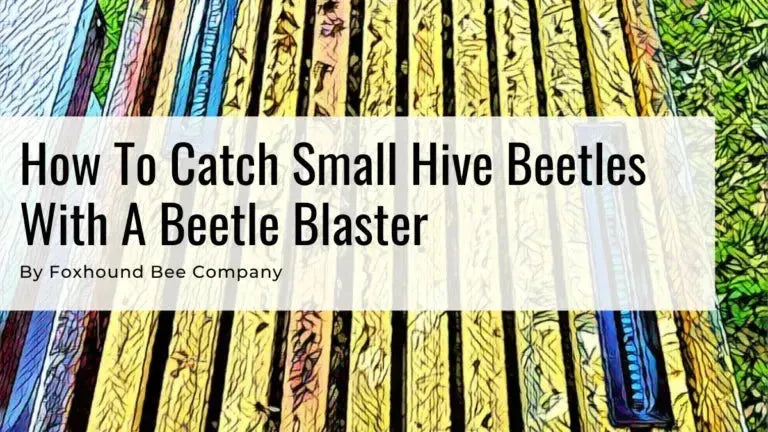
How To Catch Small Hive Beetles With A Beetle Blaster
One of the most popular traps for catching small hive beetles is the Beetle Blaster, a proven tool that works exceptionally well—when used correctly...
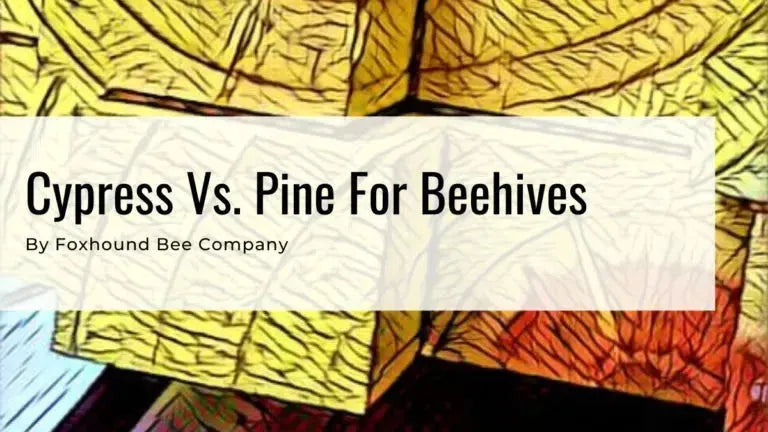
Cypress Vs. Pine For Beehives
Cypress and pine are two very popular types of wood for beehives. Pine is most common, but the most common choice may not be...
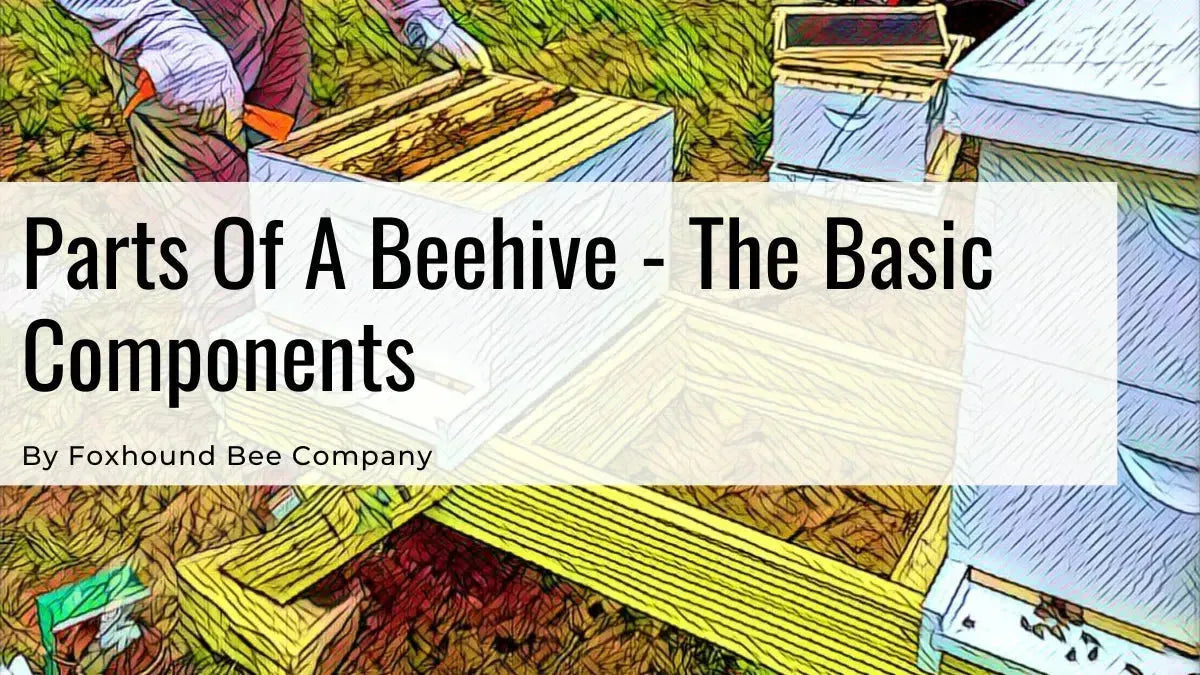
Parts Of A Beehive – The Basic Components
Explore essential beehive components in our detailed guide, from hive stands to top covers, perfect for all beekeepers. Learn more at Foxhound Bee Company.

Washing Leather Gloves
Effective beekeeping starts with clean gear. Learn how to maintain your leather gloves for longevity and easier hive management.
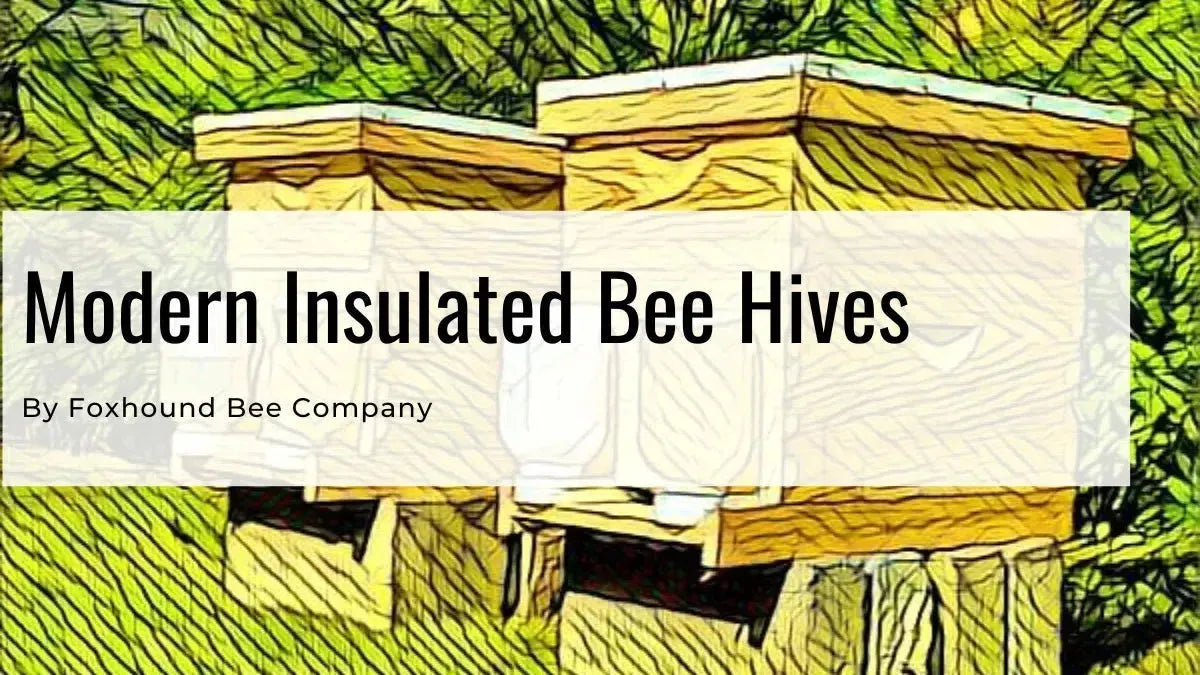
Beehive Insulation
Insulated bee hives: the efficient way to manage temperature and boost your colony's productivity. Ideal for both backyard and commercial beekeepers

Honey Supers and Brood Boxes: Explained
New to beekeeping and wondering what the difference is between a honey super and a brood box? You’re not alone. In this guide, we...

Should I Start With 8 Or 10 Frame Equipment?
One of the first choices new beekeepers face is whether to start with 8-frame or 10-frame equipment. Both setups have their pros and cons...

Live Bee Hive Scale And Sensor Data
Monitoring the weight, humidity, and temperature of a colony of bees is the modern way of checking on the colony and progress of a...
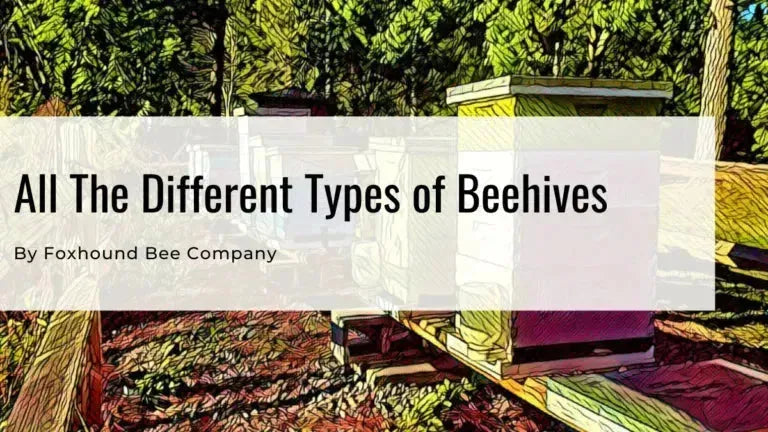
Common Types of Bee Hives (with Handicap Accessible Options)
There are many types of beehives available from the most popular Langstroth to the skep, and Warre hive. We will explain the differences.

When Do I Add Or Remove An Entrance Reducer?
Beekeepers are told to put an entrance reducer on each hive before winter starts. It is often cited that the need for an entrance...
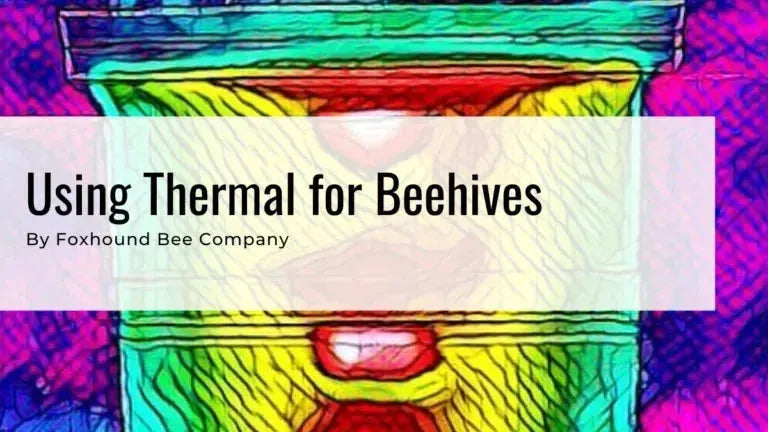
Using A Thermal Camera For Beekeeping
A thermal camera is very helpful for beekeepers in the winter and also during bee removals. They can tell you so much without opening...

Should I Start With All Medium Or Deep Boxes?
Starting beekeeping? Choosing the right equipment is crucial. Learn the differences between deep and medium boxes to find the best setup for your hive...

How Does A Fume Board Work?
The first time I tried to harvest honey, I used a bee brush to remove bees from the honey frames after I removed the...
Beekeping Pest
From varroa mites and small hive beetles to wax moths and ants, the Beekeeping Pests category helps you identify, prevent, and control the most common hive invaders. Learn how to spot early warning signs, choose the right treatment methods, and maintain a healthy, resilient colony. Practical advice and proven strategies—so your bees stay strong and productive year-round.
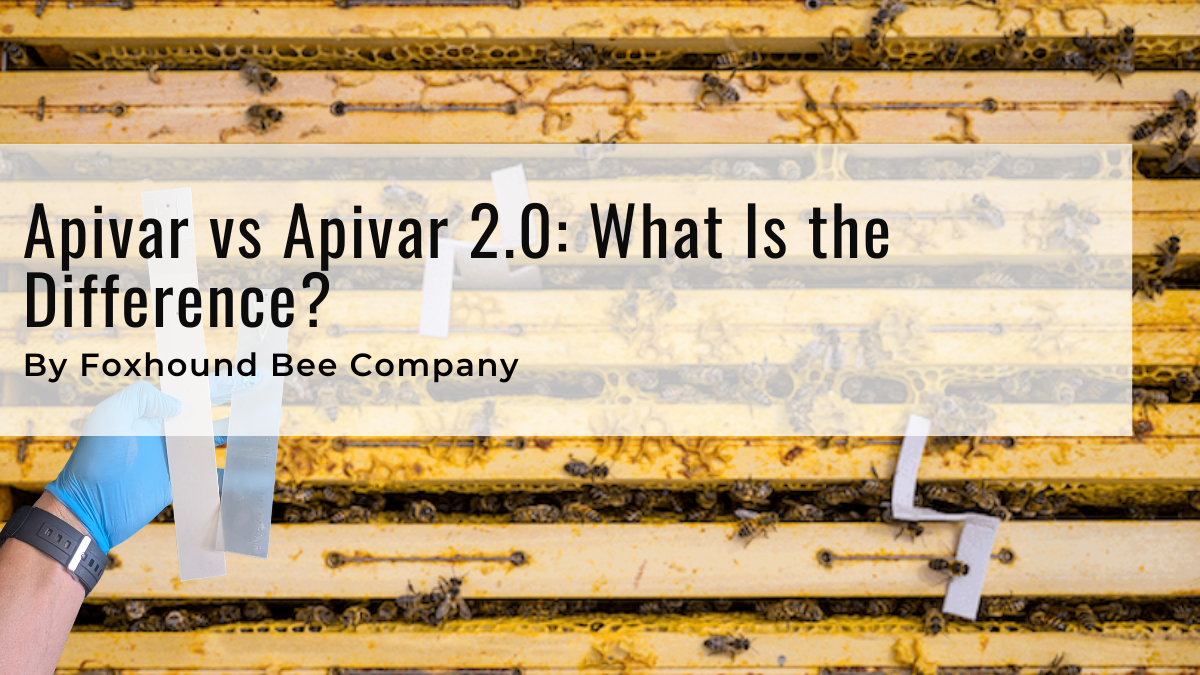
Apivar vs Apivar 2.0: What Is the Difference?
Apivar has been a trusted varroa mite treatment for decades, but the new Apivar 2.0 takes control to the next level. With faster mite...

Aluen Cap: A Varroa Mite Treatment Using Oxalic Acid
Varroa mites are one of the biggest threats to honeybee health, but new treatments are giving beekeepers hope. Aluen Cap is a simple, effective...

Varroxsan – A Cardboard Oxalic Acid Strip
Varroxsan: The new, sustainable way to combat varroa mites using cardboard oxalic acid strips, ensuring healthier, thriving bee colonies.

Amiflex – A Varroa Treatment For Commercial Beekeepers
Amiflex is a brand new 7 day varroa mite treatment designed for commercial beekeepers. It is made by Veto-Pharma and is a flash treatment...

Survey of Varroa Mite Treatments
Varroa mites can be a real problem for bees and their beekeepers; understanding how to deal with varroa mites is the first step to...

Wax Moths: What Beekeepers Can Do
Wax moths are a true pest for beekeepers and they can leave a real mess of cocoons, larva and webbing inside the hive for...
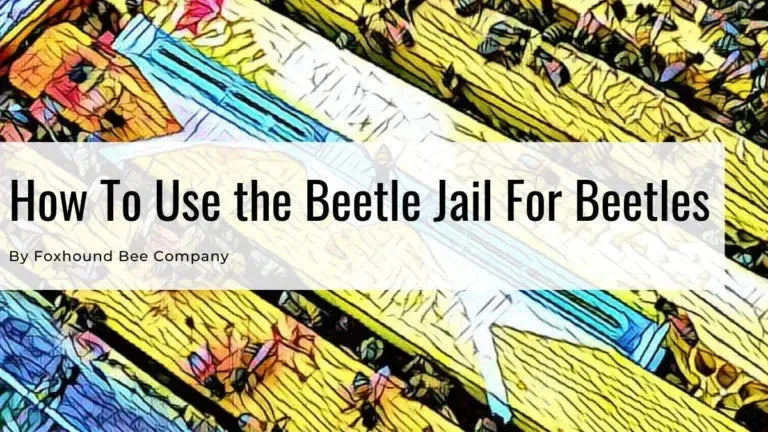
How To Catch Small Hive Beetles With A Beetle Jail
Small hive beetles can be a real problem for beehives and can wreak havoc on the health of a colony. Although most honeybees can...
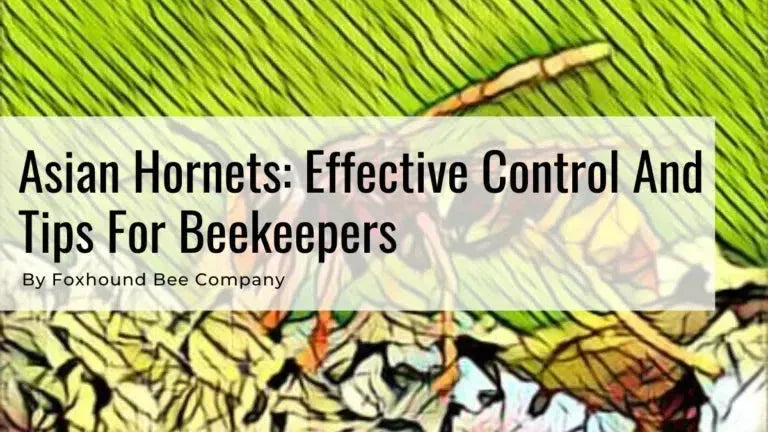
Asian Hornets Effective Control And Tips For Beekeepers
Protect your bees: Learn vital tips for beekeepers on controlling the invasive Asian Hornet, safeguarding honeybees and maintaining healthy hives and pollination.
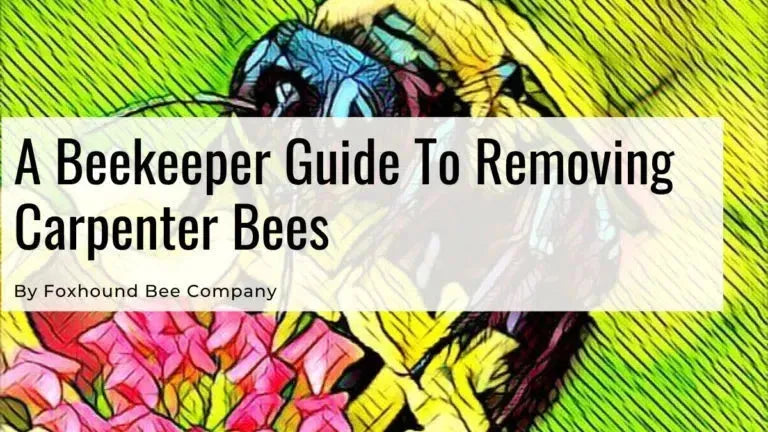
How To Get Rid Of Carpenter Bees
Protect your wooden structures and support pollinators simultaneously. Learn how to deter carpenter bees the eco-friendly way with Foxhound Bee Co.
Beeswax
The Beeswax category explores the many uses and benefits of this golden hive treasure. From rendering and filtering to crafting candles, balms, and salves, learn how to make the most of your wax harvest. Whether you're a hobbyist or a serious maker, discover tips, techniques, and inspiration to transform raw beeswax into something beautiful and useful.

Cleaning, Rendering, And Filtering Beeswax
Turning burr comb, cappings or other types of bees wax into clean, filtered bees wax can be a hard to do for the beekeeper,...
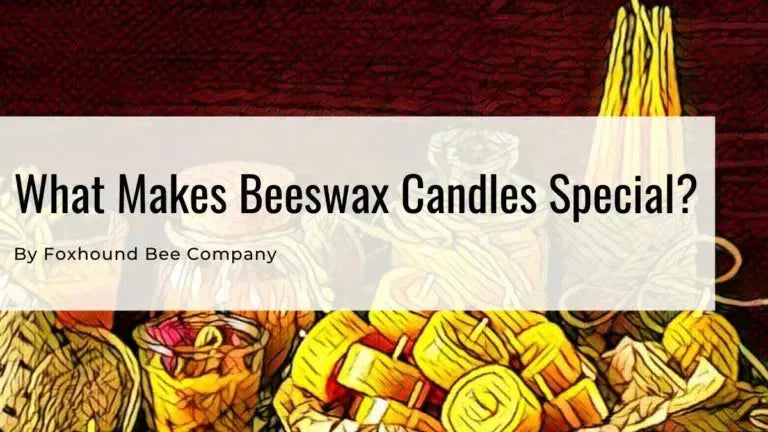
What Makes 100% Pure Beeswax Candles Special
100% pure beeswax are unique and something worth celebrating. Paraffin, Soy, and Coconut candles cant hold a candle to a beeswax candle, and we...
Feeding Bees
In the Feeding Bees category, we cover when, why, and how to feed your bees throughout the year. Learn about sugar syrup ratios, protein patties, pollen substitutes, and seasonal feeding strategies to keep your hive strong and thriving—especially during dearth periods or overwintering prep. Practical guidance for responsible, effective supplemental feeding.

Survey Of All The Ways To Feed Bees Sugar Syrup
Learn essential beekeeping techniques with our guide to bee feeders, including types, benefits, feeding tips, and Foxhound Bee Company’s expert recommendations.

Feeding Bees Pollen and Protein Substitutes: What You Need to Know
Learn when to feed pollen substitutes, the differences between patties and powder, and how proper nutrition impacts the productivity of your honey bee colonies.
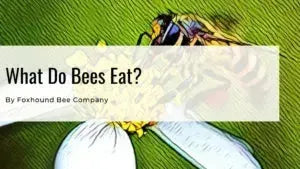
What Do Bees Eat?
Bees forage from flowers to get both their pollen and nectar, their two energy sources. Not all flowers provide pollen and nectar for bees; some produce one or the other.

The Best And Cheapest Way To Feed Bees
Feeding your bees doesn’t have to break the bank. In this guide, we’ll explore the most effective and budget-friendly ways to provide nutrition for your colony, from sugar syrups to DIY feeders. Whether you’re helping your bees through a dearth or preparing for winter, discover how to keep them strong and healthy without overspending.

Why Would I Feed My Bees Green Food Coloring?
It may sound strange, but feeding bees green food coloring can actually teach you a lot about your hive. Beekeepers use this trick to track where bees store syrup, monitor feeding activity, and even spot-test how resources move through the colony. In this guide, we’ll explain why some beekeepers use food coloring, how to do it safely, and what insights...

What Is Robbing And What Beekeepers Should Know About Protecting Their Hive
Robbing happens when bees from one colony invade another to steal honey — and it can quickly turn deadly for the weaker hive. Understanding why robbing occurs, how to recognize the signs, and what steps you can take to prevent it are crucial skills for every beekeeper. In this guide, we’ll break down the causes of robbing and share proven...

Providing Water For Bees
Master Beekeepers Reveal How to Provide Essential Water Sources for Bees – A Must for Every Beekeeper for Beekeeping Success and Hive Health.

Sugar Syrup For Bees
Discover how and when to feed bees sugar syrup, with expert tips on mixing, accurate measurements, and easy preparation to support your hive's health and growth
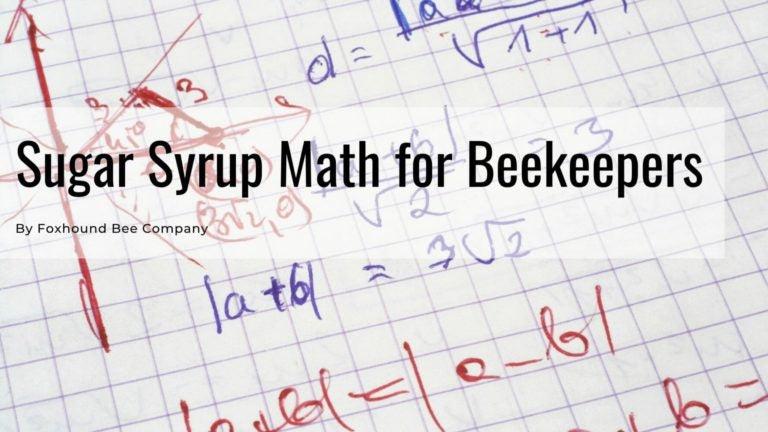
Sugar Syrup Math For Beekeepers
Figuring out how to make sugar syrup for bees can seem hard with all the different ways to do it. Well make it easier to understand for you.
Honey
The Honey category explores every step of the harvest—from when and how to extract honey to bottling, storing, and enjoying your liquid gold. Discover tools of the trade, pro tips for clean extractions, and ideas for using, gifting, or selling your honey. Whether it’s your first harvest or your fiftieth, we help you make the most of every drop.
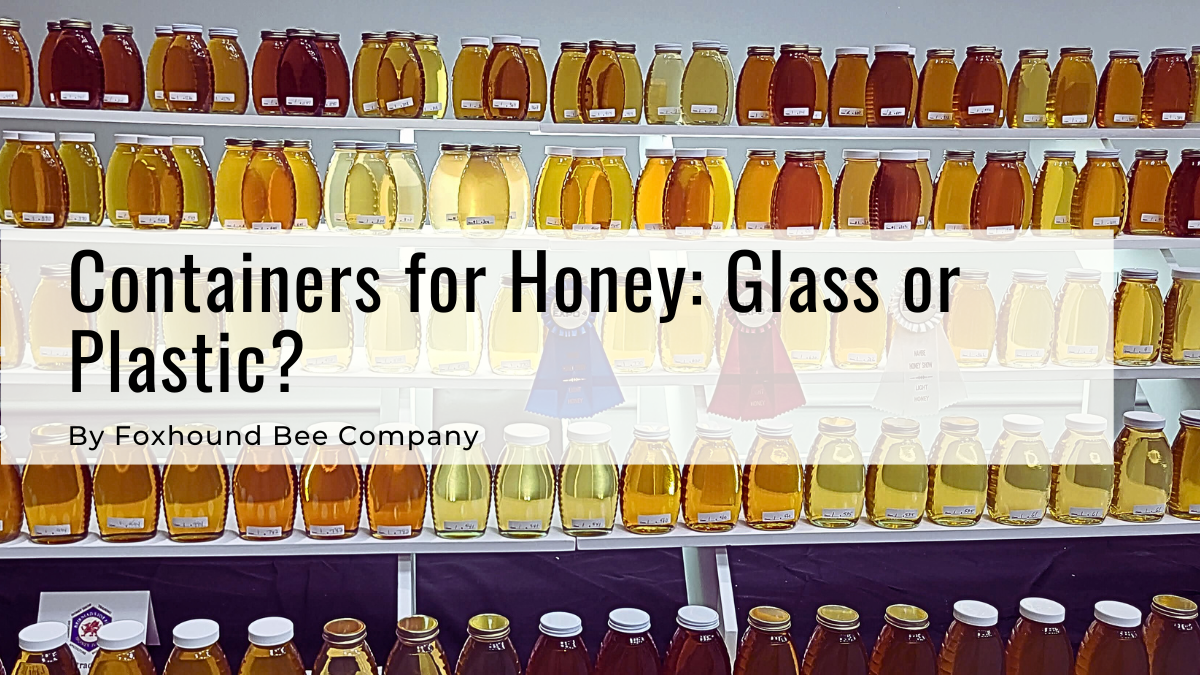
Containers for Honey: Glass or Plastic?
Choosing the right honey container isn’t just about looks—it affects freshness, storage, shipping, and how customers see your product. Plastic bottles are lightweight, affordable, and easy for shipping, while glass jars offer a premium, eco-friendly feel that elevates your brand. This guide breaks down the pros, cons, and practical tips of both options, plus advice on sizing, labeling, and storage...
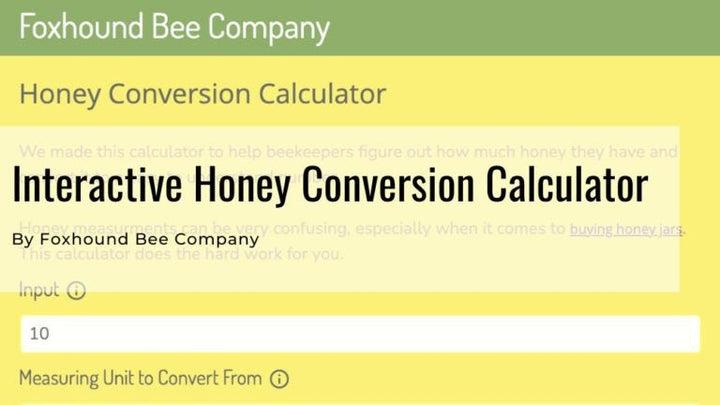
Interactive Honey Calculator For Beekeepers
Our honey calculator converts honey between weight and volume in US or metric units, including frames, ounces, pounds, liters, and more.

The Truth About Organic Honey
Learn the truth about organic honey. There is a difference between heated and raw, imported versus domestic and USDA Organic Honey.
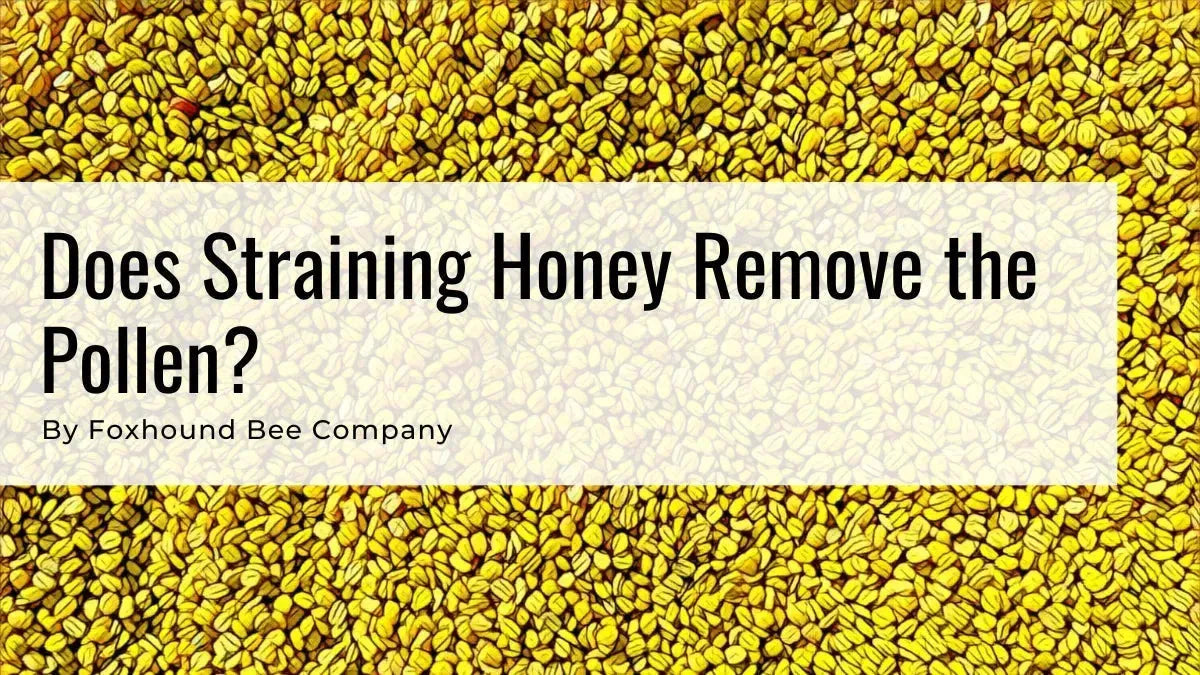
Does Filtering Or Straining Honey Remove Pollen From Honey?
Many beekeepers and honey lovers wonder if filtering or straining honey removes the natural pollen inside. The answer depends on how the honey is processed. In this guide, we’ll explain the difference between straining and fine filtering, what actually happens to pollen, and why it matters for nutrition, taste, and labeling. Clear up the confusion and learn how your honey...

Honey Colors And Why They Change
Discover honey’s diverse colors, flavors, and textures—all shaped by bees and their nectar sources. Learn how nature crafts flavorful honey varieties today.

How Much Does Honey Weigh?
Figuring out how much honey fits a bottle or converting honey measurements can be confusing. Our honey calculator helps with easy conversions for best results.

Calculator For Estimating Honey Bottles
Understanding how many glass jars or plastic bottles of honey to buy can be confusing. It’s hard to figure out how much honey you actually have, and then you have to convert that to ounces or fluid ounces, pounds, cups, etc.… It gets difficult to figure it out, but we have made that part easy. For those preparing sugar solutions for...
Honey Recipes
The Honey Recipes category is your go-to source for delicious ways to enjoy your harvest. From classic baked goods and savory glazes to refreshing drinks and healthy snacks, discover recipes that showcase honey’s natural flavor and versatility. Perfect for home cooks, food lovers, and beekeepers looking to share their golden bounty in the most delicious ways possible.

Sparkling Honey Lemonade
Refreshing and naturally sweet, this sparkling honey lemonade with basil and lemon is perfect for summer sipping or an easy cocktail base.

Kale Salad with Everyday Honey Dressing
Fresh, crunchy, and lightly sweet! This kale salad is tossed with a bright honey-lemon dressing for a versatile side or light main. Developed by chef & beekeeper Adam Hickman.
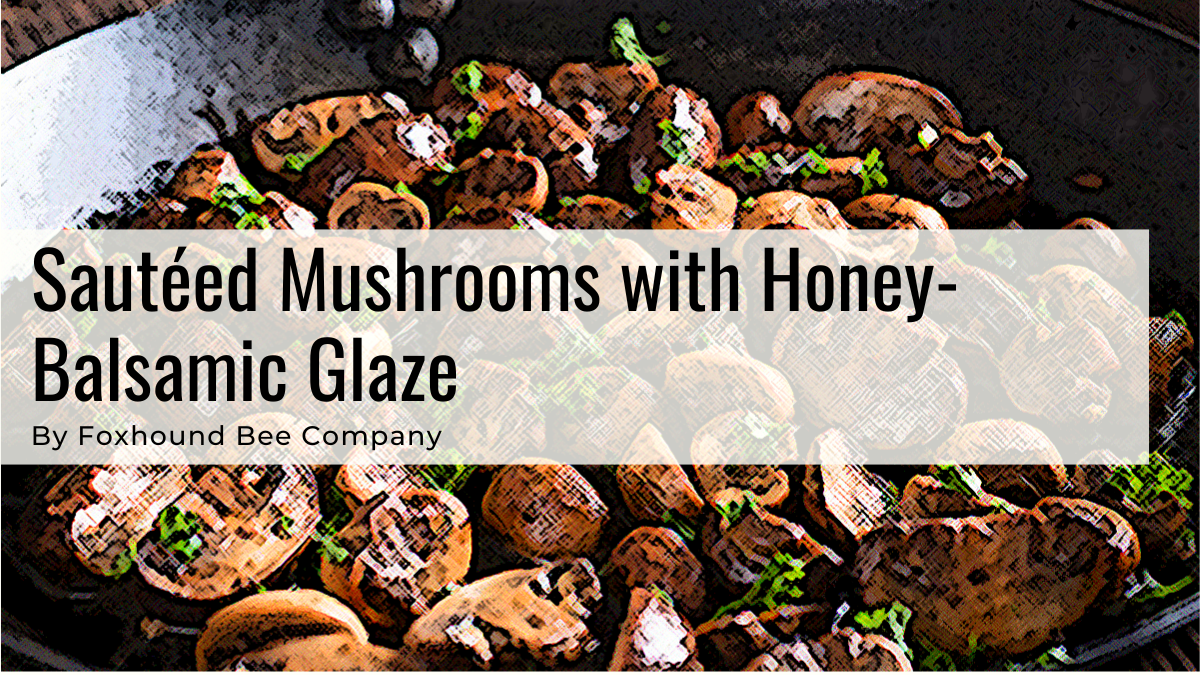
Sautéed Mushrooms with Honey-Balsamic Glaze
Rich, tangy, and slightly sweet! These sautéed mushrooms are finished with a honey-balsamic glaze for the perfect side or topping. Developed by chef & beekeeper Adam Hickman.

Honey-Brined Grilled Shrimp
Sweet, smoky, and savory! Try this summer-ready grilled shrimp recipe brined with wildflower honey. Developed by chef & beekeeper Adam Hickman.

Sticky Asian Chicken Wings with Homemade Sambal Oelek
Ticky Asian Chicken Wings with a sweet, savory glaze and homemade sambal oelek. Easy to make, bold in flavor, and perfect for any gathering or meal.
Tips and Tricks
From hive management and seasonal care to gear guides and troubleshooting common challenges, our Tips & Tricks blog is designed to help every beekeeper—whether beginner or seasoned—thrive. Discover practical insights, expert advice, and innovative techniques to make your beekeeping journey smoother, safer, and more rewarding.
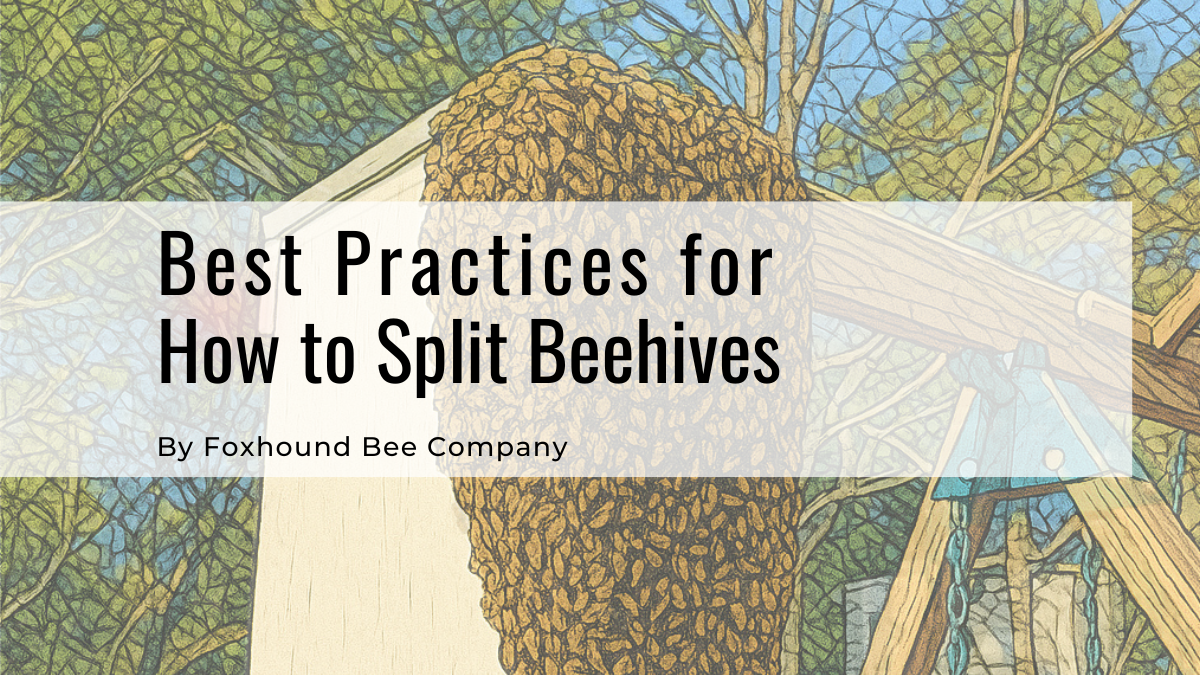
Best Practices for How to Split Beehives
Learn how to split beehives effectively to prevent swarming, expand your apiary, and boost honey production. This guide covers the best timing, methods, and post-split care to ensure strong, thriving colonies.
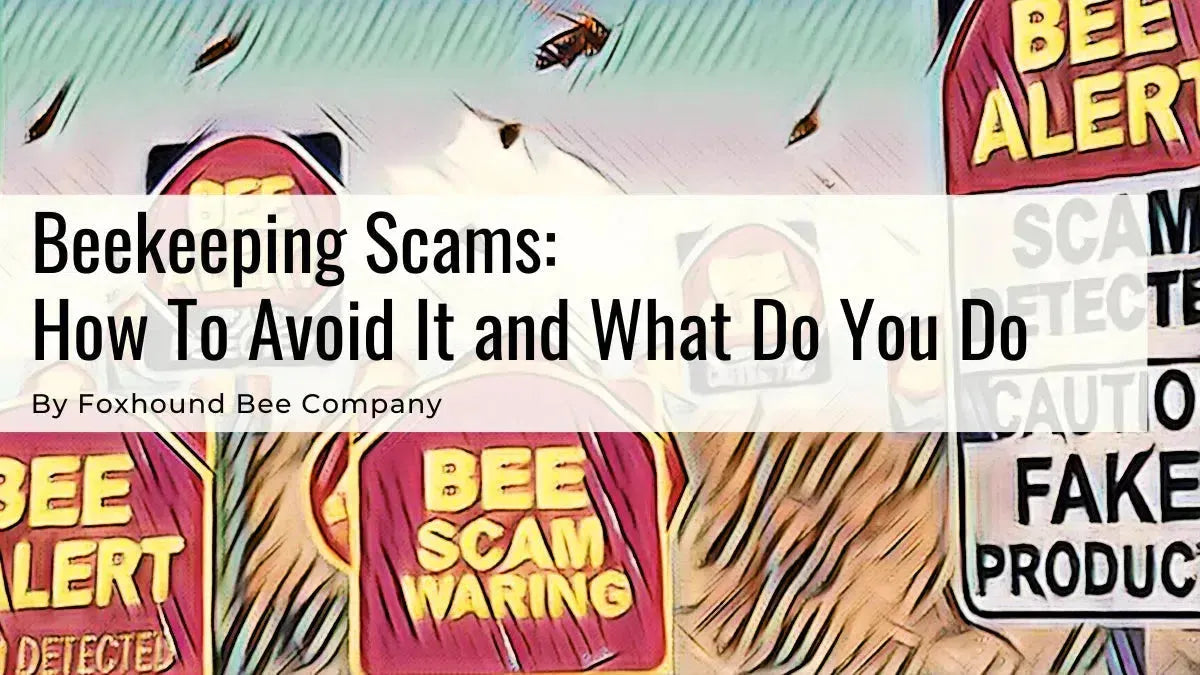
Beekeeping Scams: How To Avoid It and What Do You Do
Avoid beekeeping scams with this guide. Learn red flags, key questions to ask, and steps to safeguard your purchase from fraudulent sellers. Stay informed.

The 5 Do's and Don'ts of Buying Bees for Beginners
Learn the dos and don’ts of buying bees for beginners. Discover tips on nucs, packages, timing, and finding reputable sellers to start beekeeping right.
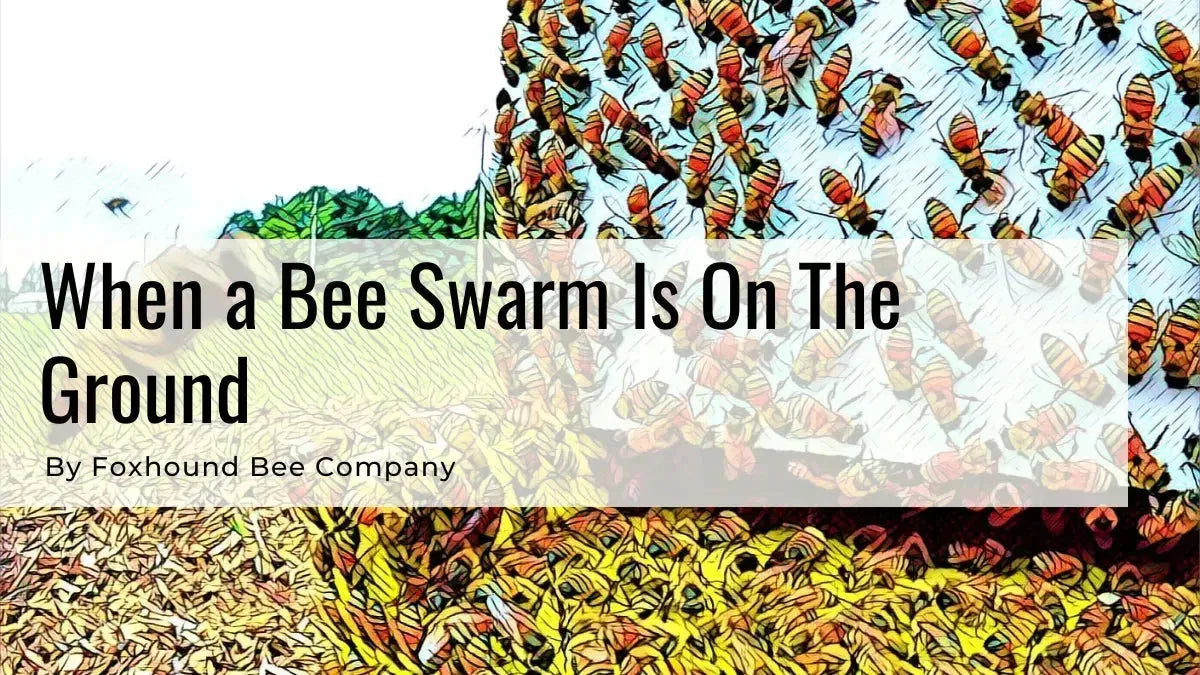
When a Bee Swarm Is On The Ground
Handling Ground Bee Swarms with Care. Understanding This Peculiar Phenomenon and How Beekeepers Manage Queen-Related Challenges on the Ground.

Flow Hive: A Beekeeper’s Take On All The Buzz
Many beekeepers and honey lovers wonder if filtering or straining honey removes the natural pollen inside. The answer depends on how the honey is processed. In this guide, we’ll explain the difference between straining and fine filtering, what actually happens to pollen, and why it matters for nutrition, taste, and labeling. Clear up the confusion and learn how your honey...
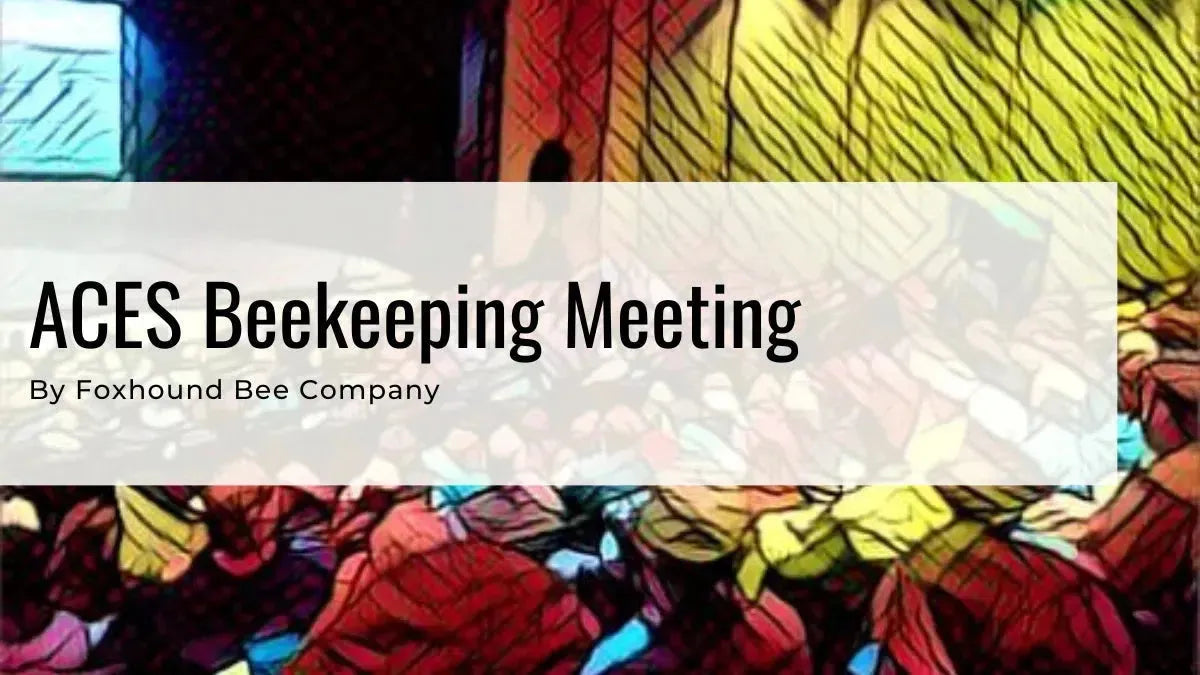
Auburn Spring State Beekeeper’s Meeting
ACES in Alabama hosts a spring beekeeping meeting each year and it is an excellent meeting; a meeting as good as national meetings.
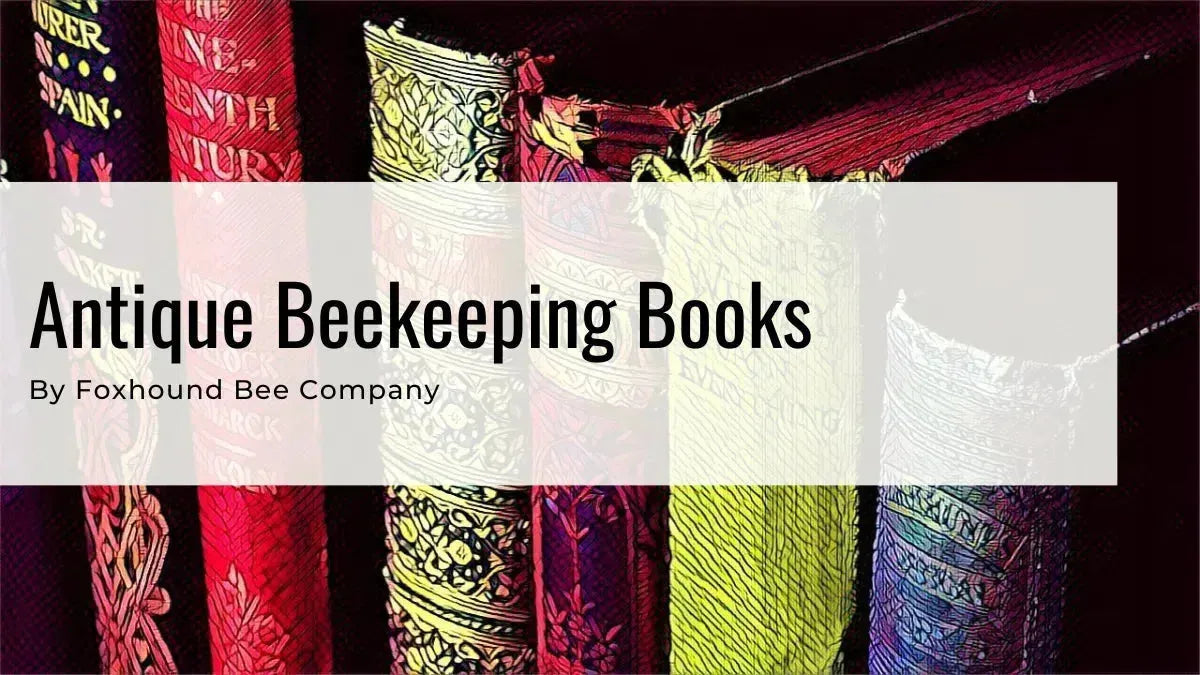
Antique Beekeeping Books
Antique beekeeping books have a lot to offer and you can find them in all kinds of places. Many have been digitized and downloadable.
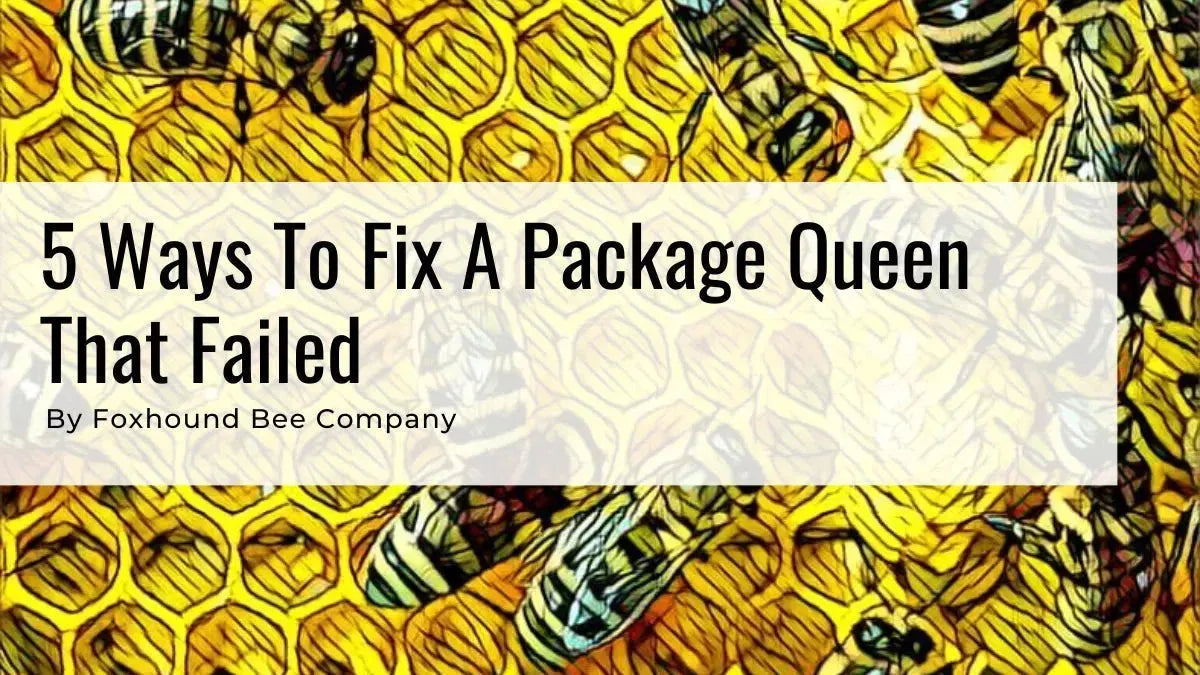
5 Ways To Fix A Package Queen That Failed
Fixing a failed or dead queen in a beehive can be frustrating, especially when it is the queen in your newly purchased package of bees.
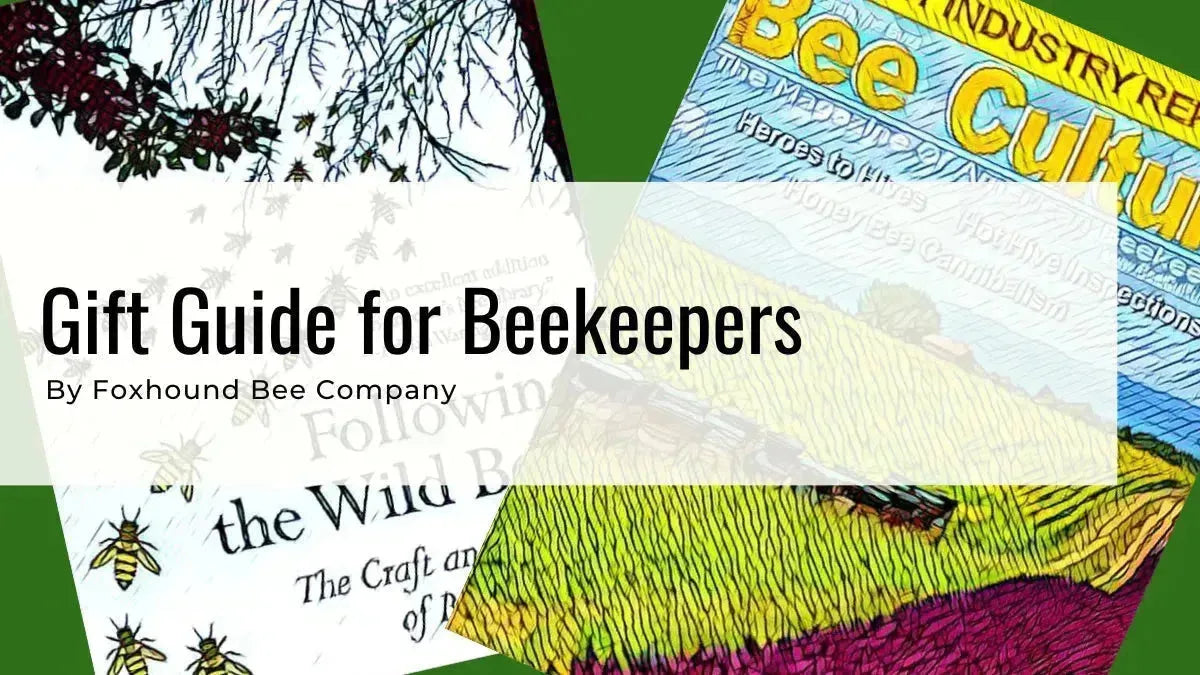
Updated: 15 Practical Gifts For Beekeepers Under $40
Our gift guide for beekeepers is a great place to find that unique birthday or Christmas gift for your favorite favorite beekeeper that is budget friendly.
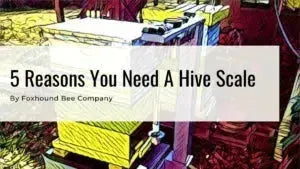
5 Reasons You Need A Hive Scale
A hive scale might seem like extra equipment, but it’s one of the most powerful tools a beekeeper can have. From tracking colony growth and nectar flow to predicting swarms and planning harvests, a scale gives you insights you can’t get just by peeking inside. In this article, we share five key reasons every beekeeper — beginner or seasoned —...

12 Steps To Becoming A Beekeeper
Getting started in beekeeping can be difficult, but there are a few steps that you should follow when thinking about becoming a beekeeper.
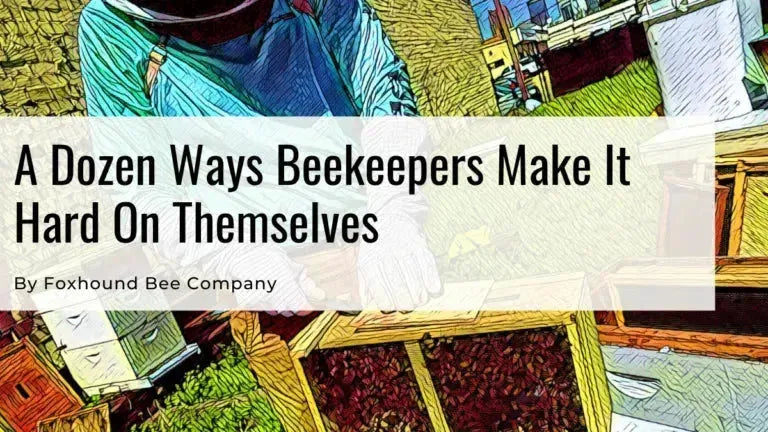
A Dozen Ways Beekeepers Make It Hard On Themselves
Beekeeping is tough even for the best beekeeper; I mean, these are tiny stinging insects that, for the most part, do what they want. You can do everything right when caring for bees, and it can still not go the way you want it to. We can help.
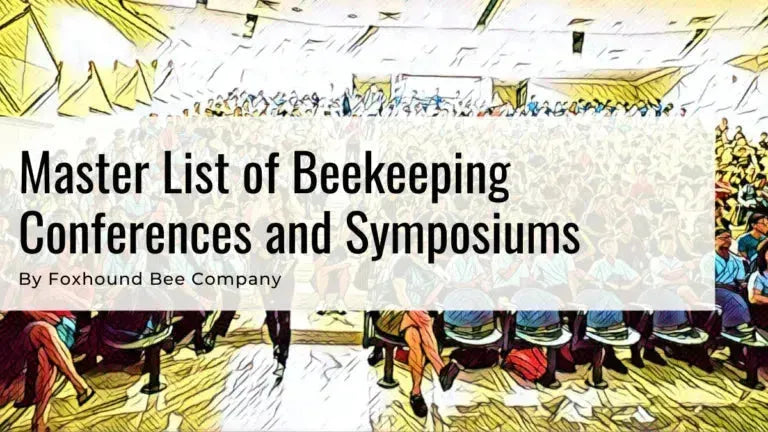
International, National And State Beekeeping Conferences
Do you want to find a beekeeping conference near you to attend? Our master list of state, regional, national and international meetings will help.

Apimondia: An Overview of the Conference
Apimondia is the world’s leading beekeeping conference, bringing together researchers, professionals, and hobbyists from across the globe. In this overview, we’ll highlight what the event is all about — from groundbreaking research and innovative hive technologies to cultural exchanges and global networking opportunities. Whether you’re a beginner or an experienced beekeeper, Apimondia offers insights and inspiration for everyone in the...
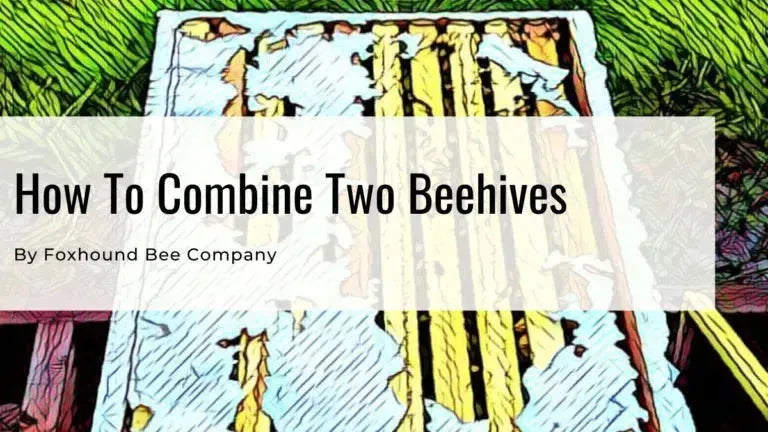
How To Combine Two Beehives
The stack of white boxes you see in your mind is a single bee hive. Sometimes these hives are very strong, and some are weak. Beekeepers may have a situation where one is a queenless hive and won't survive much longer as is, so they will need to be combined with a stronger hive. It isn't hard to combine hives,...
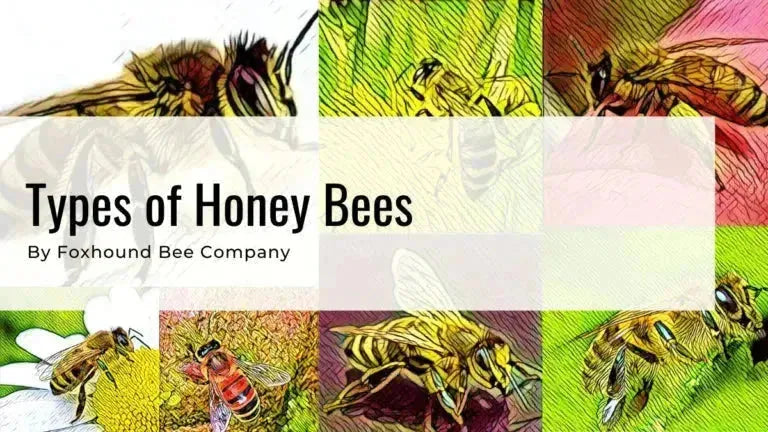
Types Of Honey Bees
Get to Know Your Bees: Exploring About Common Subspecies and their Unique Characteristics essential for successful beekeeping.
Queens
The Queens category is dedicated to understanding, raising, and managing the most important bee in your colony. Learn how to identify a healthy queen, recognize queenless hives, introduce new queens, and even explore queen rearing techniques. Whether you're buying, raising, or replacing, this is your resource for all things queen-related.

How To Run A Queen Bank
Banking Queens at Foxhound Bee Company: Learn How We Store and Care for Queens in Our Beekeeping Practices for Beekeepers of All Levels.
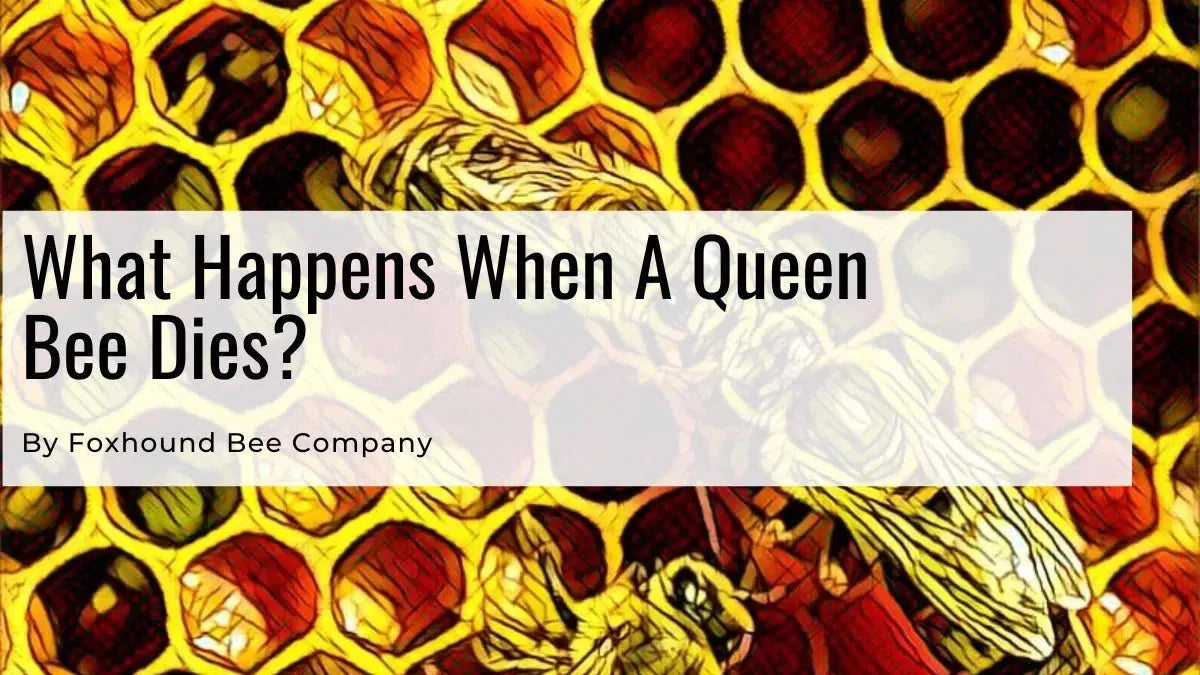
What Happens When A Queen Bee Dies?
Discover what happens when a bee colony loses its queen, why colonies go queenless, and how worker bees quickly respond to raise a new queen in her place.

Queen Marking Colors
Learn how to mark queen bees with the right tools and color codes. Understand the benefits of marking and how it aids in easy queen tracking and hive management

Should You Use A Queen Excluder?
When, how and why to use a queen excluder is a common beginner beekeeper question and we can help you find out if a using one on your hive is right for you.
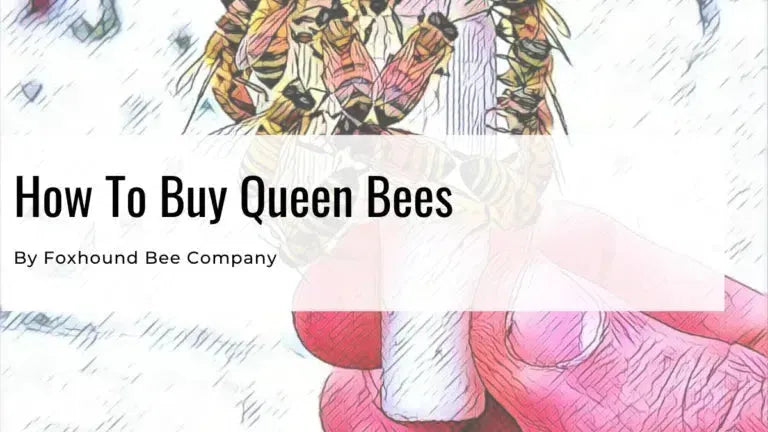
Buying Queen Bees
Buying queens for your bees can be a little overwhelming, but as the beekeeper you have multiple options from queen cells to mated queens
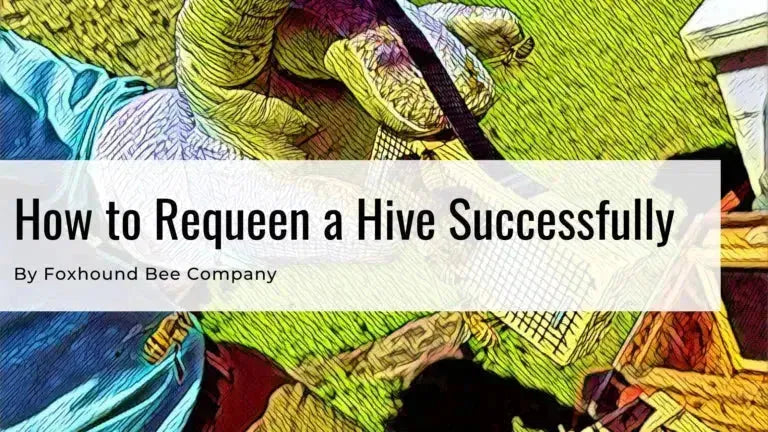
Requeening A Hive
When having to requeen the hive , it can be a stressful situation for both the worker bees and the beekeeper. Many things can go wrong when a queenless colony of bees decides to replace its queen with a new queen. When left to the bees to perform this task, usually the colony will be successful, but there is always a...
Questions and Answers
The Questions & Answers category tackles the most common (and uncommon) inquiries from beginner to advanced beekeepers. From “Why are my bees bearding?” to “When should I harvest honey?”—we break down the what, why, and how with clear, practical guidance straight from the hive. Got a question? Chances are, we’ve covered it here.
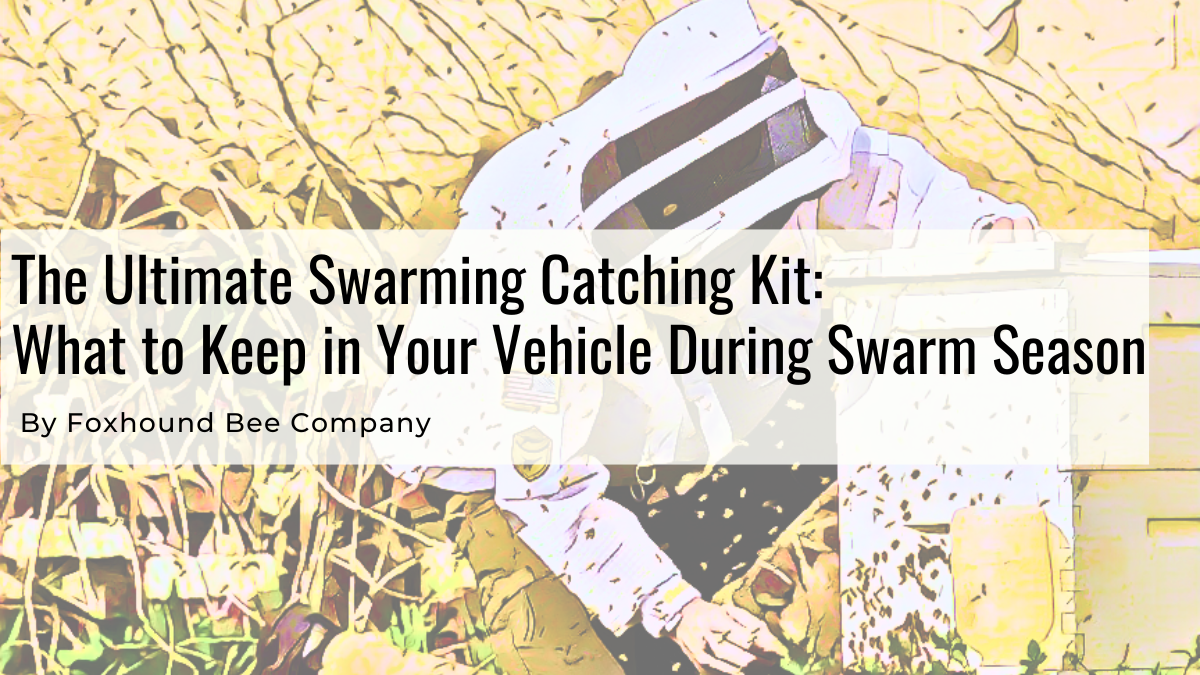
What to Keep in Your Vehicle During Swarm Season
Be Ready for Swarm Season: Your Go-To Swarm Catching Kit Guide Stay prepared this spring with The Ultimate Swarm Catching Kit Guide from Foxhound Bee Company. This field-tested resource walks you through exactly what to keep in your vehicle to safely and successfully catch honey bee swarms. Learn when swarms typically occur in your region, how to spot prime swarm...

Packages Or Nucleus Hives, Which Is Better?
When starting a beehive, one of the first decision beekeepers face is to start with package bees or a nucleus hive. Both can be a good option.

Nectar Dearth: What Beekeepers Should Know
Discover what you need to know about a honey dearth and what beekeepers need to do about to help keep them alive during a nectar dearth

What Is A Nectar Flow?
Honeybees are very industrious creatures. They work tirelessly to gather the nectar from a plethora of flowers, which they then convert into honey and store in their hives for safekeeping through the winter months when it may be scarce.

What Happens To Bees In Freezing Weather?
Winter is pretty hard on animals, and while we may not think about it much, honeybees and other insects have to survive the cold each year.

How To Install A Nuc Of Bees – Step By Step Guide
Our how to Install a nuc guide and video provides an instructional walkthrough for hive installation, a must-read for beginner beekeepers.

Why Did My Package Of Bees Leave?
Package bees may leave a new hive if they dislike it. Absconding happens when bees find their setup unsuitable. To fix, try attracting them back or buy a Nuc.

What Do Bees Do In The Winter?
Believe it or not, bees do not make honey year around. The winter is the "off-season" for a beehive and they concentrate on staying warm.
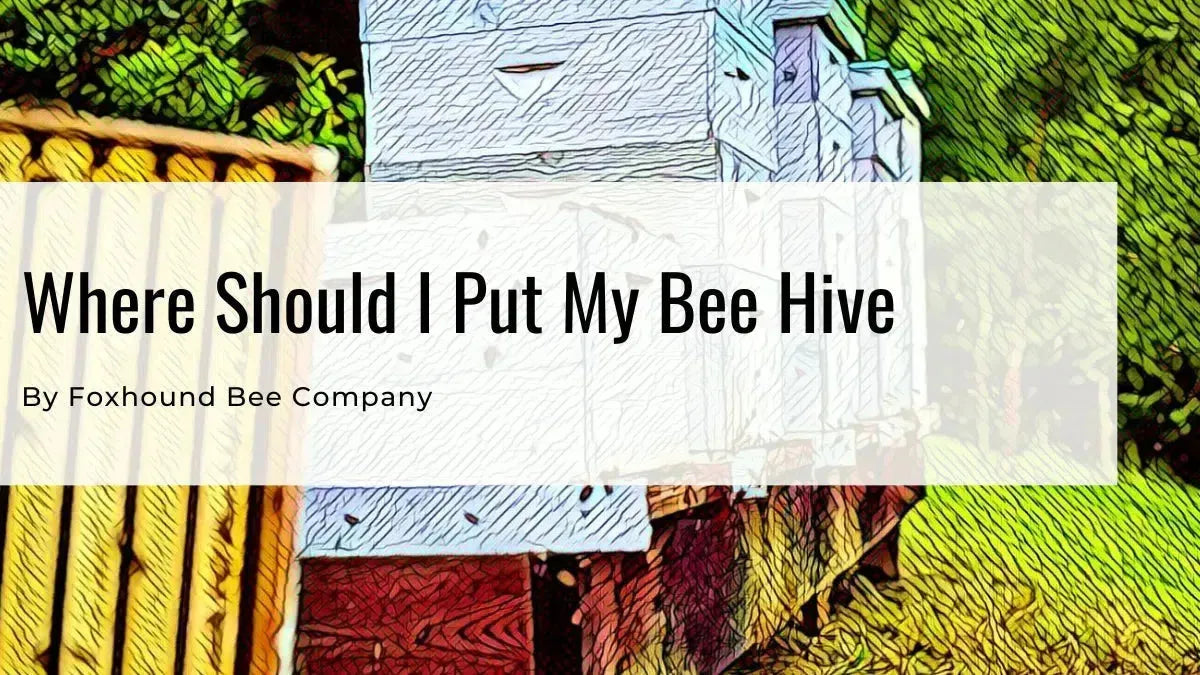
Where Should I Put My Bee Hives?
Finding the right spot to place your bees is very important. It's hard to move bees from one location to another if you don't have a large property. Use our guide to make sure you place your colony in the right location.

What Is A Swarm Of Bees?
A swarm of bees is a natural and fascinating process. Learn why bees swarm, what to do when you see one, and how to manage or prevent swarming.
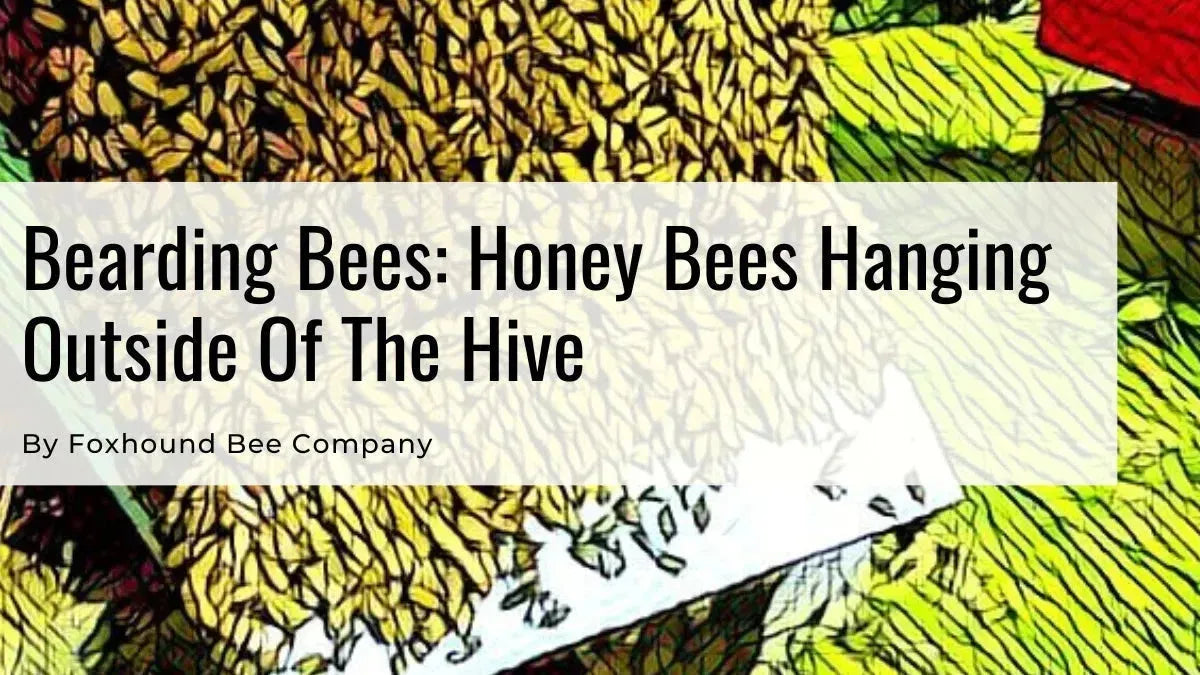
Bee Bearding: What It Is And Should Beekeepers Do Anything
Bearding is when honey bees cluster at the hive entrance, forming ‘beards’ or goatees. Discover why bees beard and what it indicates about hive health.

Nucleus Hives and Packages, The Major and Minor Differences plus What’s Next?
Our lesson on the differences between a package of bees and nucleus hives, presented in video in for beekeepers to understand which is best.

How and Why To Mark Your Queen Bee
Marking queens is a very helpful skill for beekeepers, and beekeepers of all skill levels can mark their queens with the right tools. There are several reasons why marking queens is helpful.

How Long Do Bees Live?
A honeybees life is actually a lot shorter than you might think and while the colony can possibly live forever, a single honey bee cannot.
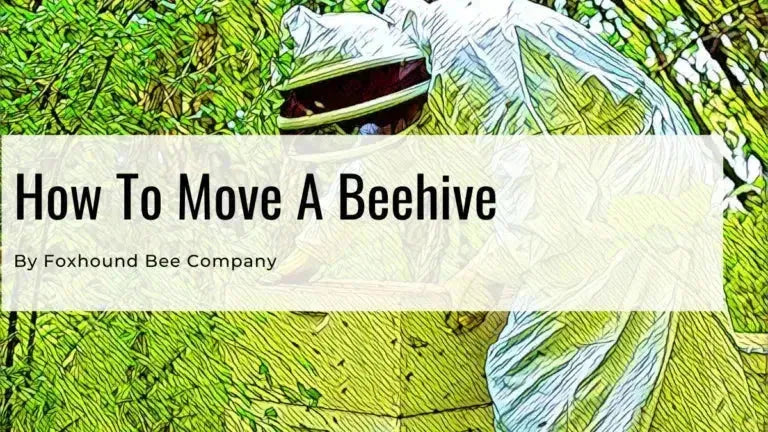
How To Move A Beehive
So, you put lots of thought into where you’d place your beehives , but for some reason or another, now you’ve got to move your honey bee hives. How do you safely move a heavy box or stack of boxes with 60,000 bees in it? In this case, the hive box is the structure you’ll be moving.First, here are a few things...
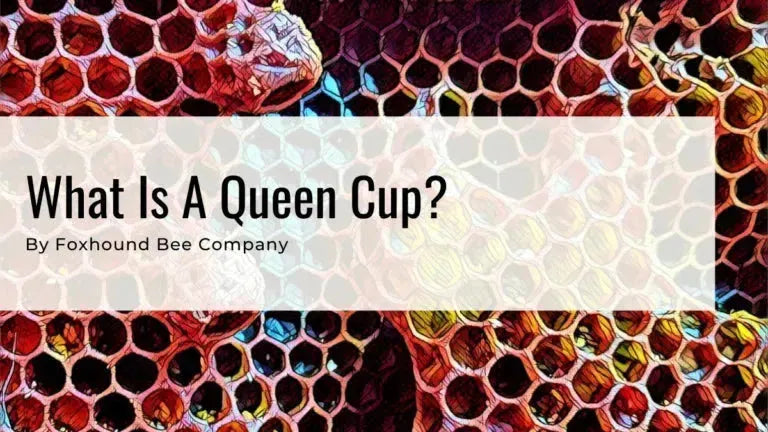
What Is A Queen Cup?
So you have opened your hive up and you find all these things you don’t remember talking about in your beekeeping class . Right? That’s ok, you are not alone and we are happy to help. Are they queen cells? Are they swarming ? Do I still have a queen ? What was wrong with my old queen? If these questions are...
